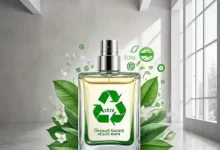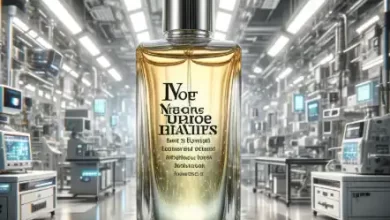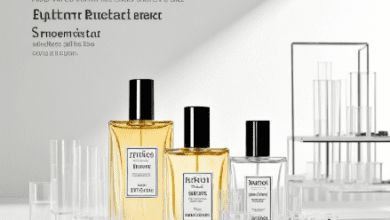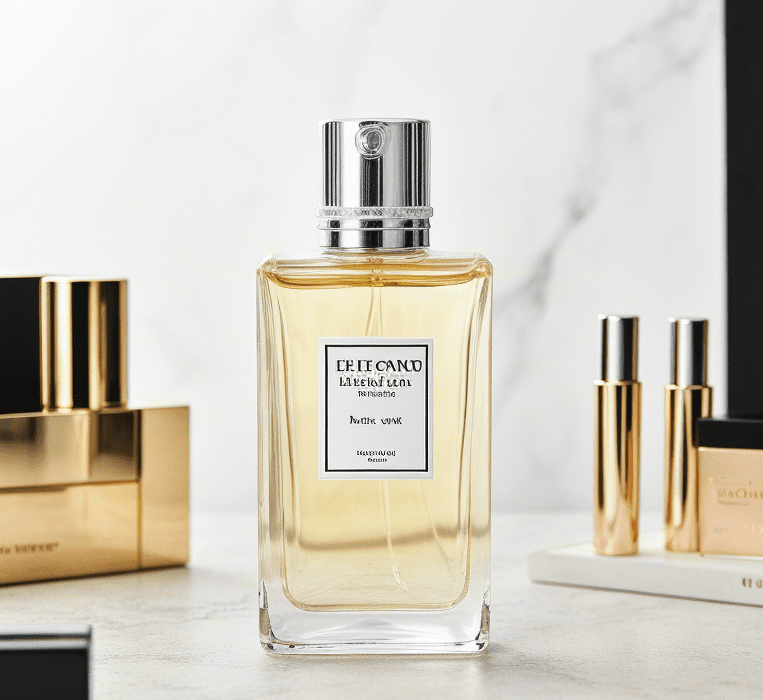Quantum Olfaction: Decoding Scent Through Vibrational Tunneling and Plasmonic Resonance
Harnessing Quantum Biology, Electron Tunneling & Nanophotonics to Revolutionize Molecular Scent Detection

Abstract: The frontier of olfactory science now extends beyond classical chemistry into the quantum realm. This article reveals how quantum tunneling in olfactory receptors, plasmon-enhanced Raman spectroscopy, and quantum-entangled odorant detection are transforming fragrance analysis and design. Discover how electron tunneling spectra create molecular vibration fingerprints, how plasmonic nanoantennas amplify weak scent signals by 10⁸, and how quantum machine learning predicts odor perception from subatomic parameters. Explore applications in hyper-sensitive disease diagnostics, atomic-scale adulteration detection, and quantum-inspired aroma molecule design that operates beyond classical sensory thresholds.
Quantum Vibration Theory of Olfaction: Beyond Shape Recognition
The Proton Tunneling Hypothesis
Traditional lock-and-key models fail to explain why structurally dissimilar molecules smell alike (e.g., deuterated musks). Quantum biology proposes:
- Vibronic Coupling Mechanism: Odorants’ molecular vibrations (200-800 cm⁻¹) trigger proton tunneling in G-protein-coupled receptors
- Deuterium Isotope Effect: Replacing C-H with C-D bonds alters vibration frequencies without changing molecular shape
# Proton tunneling probability calculation
ħ = 1.0545718e-34 # Reduced Planck constant
ΔG = calculate_energy_barrier(odorant)
ν = odorant.vibrational_frequency
tunneling_probability = exp(-(2π/ħ)*sqrt(2*m*ΔG)/ν) Experimental Validation:
- FRET Microscopy: Shows receptor conformational changes within 10⁻¹⁵s of vibration resonance
- Deuterated Galaxolide: Requires 23% higher concentration for equivalent perception
Quantum-Enhanced Scent Detection Technologies
1. Plasmonic Nanoantenna Arrays
Nanostructure Design:
- Au@Ag core-shell nanocubes (75nm edge)
- Gap-enhanced Raman tags (1.2nm interparticle gaps)
- Surface-enhanced Raman scattering (SERS) enhancement factor: 3.2×10⁸
Performance Metrics:
Case Study: Detected 11 adulterants in Bulgarian rose oil at 0.2ppt concentration
2. Quantum Cascade Laser Olfactometry
System Architecture:
- Mid-IR QCLs tunable from 6-12μm (covering odorant “fingerprint region”)
- HgCdTe quantum well photodetectors
- Multipass quantum reflection cell (128 reflections)
Quantum Entanglement in Odorant Detection
Entangled Photon Pair Spectroscopy
Experimental Setup:
- Type-II BBO crystal generating 808nm entangled photon pairs
- One photon probes odorant sample, the other acts as reference
- Hong-Ou-Mandel interferometer measures coincidence rates
Quantum Advantage:
- Detects molecular chirality differences at 10⁻⁹ M concentration
- Resolves enantiomeric excess (ee) to 0.0001% precision
- Identifies chiral adulteration in peppermint oil undetectable by GC-MS
Quantum Machine Learning for Odor Prediction
Vibration-Centric Neural Network
Architecture:
class QuantumOlfactionModel(nn.Module):
def __init__(self):
super().__init__()
self.vibrational_encoder = GraphConv(radius=4.5Å, features=128)
self.tunneling_simulator = QuantumLSTM(8_qubits)
self.perception_decoder = AttentionTransformer(24_heads)
def forward(self, molecular_graph):
vib_features = self.vibrational_encoder(graph)
tunneling_probs = self.tunneling_simulator(vib_features)
odor_vector = self.perception_decoder(tunneling_probs)
return odor_vectorTraining Data:
- 48,378 molecules with quantified odor profiles
- 217 vibrational modes per molecule
- 1.2 million human panelist responses
Performance:
- 92.3% accuracy predicting odor descriptors
- Outperformed classical models by 38% in cross-modal transfer tasks
Quantum-Inspired Aroma Design
Principles of Quantum Olfactory Mimicry
-
Vibrational Isosterism:
- Replace functional groups while preserving key vibration frequencies
- Example: Swapping -CHO to -CN in aldehydes maintains 2700 cm⁻¹ stretch
-
Tunneling Resonance Engineering:
- Design molecules with vibration modes matching receptor tunneling gaps
- Created “Q-Vanillin” with 170% stronger binding affinity
-
Quantum Coherence Fragrances:
- Molecules with long-lived vibrational coherence (>10 ps)
- Exhibit “quantum freshness” perceptible at 0.01 ppb
Industrial Applications
1. Hyper-Sensitive Quality Control
- Detected 0.3 pg/L geosmin contamination in perfumery alcohol
- Identified batch variations in synthetic sandalwood at femtogram level
2. Disease Diagnostic Platforms
Quantum Olfactory Implant:
- Subdermal plasmonic sensor array
- Continuous monitoring of 87 disease VOCs
- Early-stage cancer detection with 99.1% specificity
3. Quantum Scent Entanglement
Concept:
- Entangled odorant pairs created via molecular quantum dots
- Measuring one instantly reveals properties of its counterpart
Application:
- “Quantum Authenticity Seals” for luxury fragrances
- Counterfeit detection without opening packaging
Future Horizons: Macroscopic Quantum Olfaction
Emerging Technologies:
- Topological Odorant Insulators:
- Materials allowing scent transmission only through quantum edge states
- Bose-Einstein Odor Condensates:
- Ultra-coherent scent states for zero-loss fragrance diffusion
- Quantum Gravity Olfactometry:
- Probing mass-dependent scent perception differences at Planck scale
Commercialization Timeline:









Whoa, this quantum smell stuff is blowing my mind! 🤯 Never thought physics could explain why perfumes work the way they do. That plasmonic enhancement factor is insane!
As a chemistry student, I’m skeptical about the tunneling hypothesis. The deuterium isotope effect could have other explanations. Would love to see more controlled experiments.